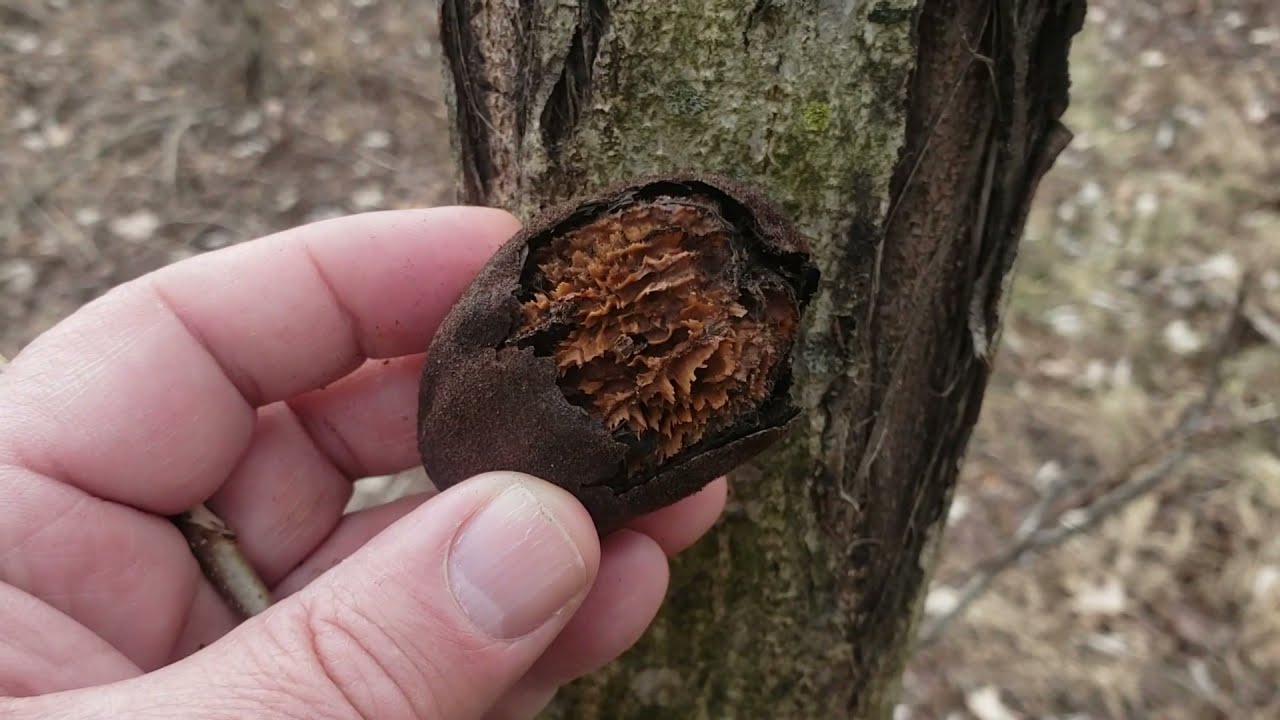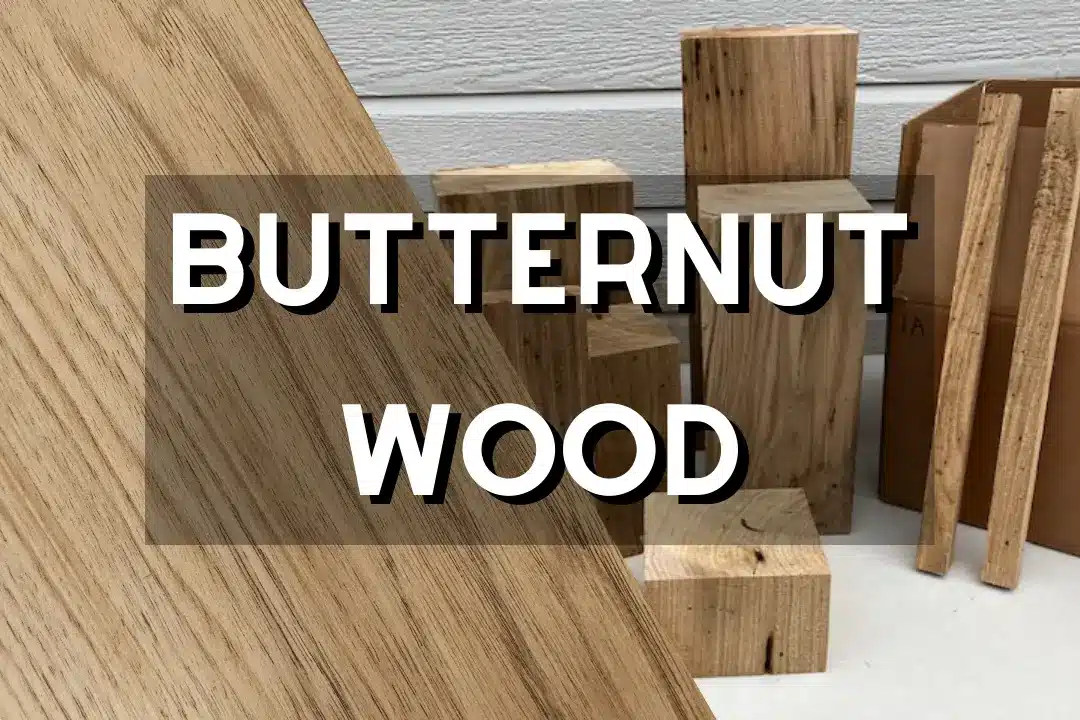
Butternut Wood: A Stunning and Durable Hardwood Option.

Did you know that butternut trees are getting rarer in cities and suburbs? They were once common in North America. Now, they’re known for their beauty and great workability in woodworking.
Butternut wood, or Juglans cinerea, is highly sought but hard to find. Studies show it’s a favorite but not easy to get.
Butternut wood is loved for its warm tan color and special grain patterns. It’s perfect for making furniture and carvings. It’s also light, making it great for creating strong wood items. Top-quality boards cost about $4 per board foot.
But, there are worries about its future. Butternut canker disease is a big threat. It could make this beautiful wood harder to find.
Table of Contents
What is Butternut Wood?
Butternut wood, also known as white walnut, is a type of hardwood. It’s part of the walnut family and is loved by many woodworkers. This wood grows in the Eastern United States, reaching up to 100 feet tall and 5 feet wide.
The wood’s color starts as creamy tan to light brown. As it ages, it turns into beautiful golden hues. It’s known for its mellow sheen, making it easy to work with.
Butternut wood has a specific gravity of .36 to .43. This makes it relatively easy to handle. It also has a Janka hardness rating of 490 lbf, which means it’s soft but durable.
White walnut wood faces challenges due to the Butternut canker disease. This disease has reduced its population to just 10% of its former range. It’s moderately resistant to decay but can be attacked by insects.
Despite these challenges, butternut wood is still valued for its beauty and practicality. It’s priced mid-range among domestic hardwoods, making it a great choice for woodworking projects.
| Property | Value |
|---|---|
| Average Dried Weight | 27 lbs/ft³ (435 kg/m³) |
| Specific Gravity | .36 to .43 |
| Janka Hardness | 490 lbf (2,180 N) |
| Modulus of Rupture | 8,100 lbf/in² (55.9 MPa) |
| Elastic Modulus | 1,180,000 lbf/in² (8.14 GPa) |
| Crushing Strength | 5,110 lbf/in² (35.2 MPa) |
| Shrinkage | Radial: 3.4%, Tangential: 6.4%, Volumetric: 10.6% |
| T/R Ratio | 1.9 |
| Decay Resistance | Moderately durable to non-durable |
| Availability | Mid-range pricing for domestic hardwood |
The Characteristics of Butternut Wood
Butternut wood is special in the hardwood world. It has a unique color, texture, and grain pattern. These qualities make it both beautiful and useful for many projects.
Color and Appearance
The color of butternut wood is warm and tan, with pink, gray, or dark brown streaks. As it ages, it gets even richer and more beautiful. When polished, it shines brightly, making it a standout in hardwoods.
This color change shows the wood’s age and character. It adds depth and beauty to any piece.
Grain Patterns and Texture
Butternut wood has different grain patterns, from straight to curly. Its texture is coarser than maple but finer than oak. This makes it interesting to touch.
Each piece of butternut has visible pores, adding to its unique look. The mix of grain patterns and texture makes it perfect for detailed work.
| Characteristic | Description |
|---|---|
| Color | Warm buttery tan with streaks of pink, gray, or dark brown |
| Texture | Coarser than maple, finer than oak |
| Grain Patterns | Variable, ranging from straight to curly or burly |
| Patina | Develops a rich patina over time |
| Natural Luster | Shines brightly when polished |
Comparing Butternut Wood to Other Hardwoods
Knowing the differences between hardwoods helps when choosing materials for woodworking. A detailed comparison shows how butternut wood compares to black walnut and others. This is key for woodworkers picking the best material for their projects.
Butternut vs. Black Walnut
Butternut and black walnut are both from the Juglans genus. Butternut is lighter and softer, making it easier to work with. Its grain patterns can look like black walnut’s, but they differ in durability and price.
Butternut has a Janka hardness rating of 490, showing it’s softer than black walnut. This means butternut is more likely to dent and scratch.
Softness and Density
Butternut’s density affects its use in woodworking. It’s a soft hardwood, weighing about 2.3 pounds per board foot. This makes it great for delicate projects but not for high-traffic areas.
Its softness is perfect for intricate carvings or a rustic look. It’s appealing to both beginners and seasoned woodworkers.
| Property | Butternut | Black Walnut |
|---|---|---|
| Density (lbs/ft³) | 24 | 39 – 56 |
| Janka Hardness Rating | 490 | 1010 |
| Common Uses | Cabinetry, furniture, crafting | Furniture, cabinetry, veneers |
| Workability | Ease of carving, forgiving nature | Requires more effort for shaping |
| Market Availability | Less common, typically under $10/board foot | More valuable in lumber markets |
Where Butternut Wood Grows
Butternut wood comes from the Juglans cinerea tree. It grows mainly in the eastern half of North America. You can find it from New Brunswick and southern Quebec to parts of the Midwest. This includes Iowa and the southern United States, like Arkansas and Mississippi.
This wide range shows how adaptable butternut wood is. It thrives in moist wooded slopes and bottomlands. These areas support its growth well.
Butternut trees can grow up to 60 feet tall and 50 feet wide. They do best in USDA zones 3 through 7. They like rich, moist soils but grow slowly.
Their leaves have 11 to 17 leaflets. Butternut trees start producing seeds around 20 years old. They spread seeds every 2 to 3 years, usually from September to October.
Butternut trees love mixed hardwood forests, but most are in North Central states. They rarely grow in cities or suburbs. This makes finding butternut wood hard. A fungus called Sirococcus clavigignenti-juglandacearum also hurts butternut trees, making them less valuable. Still, White walnut wood is prized for many uses. Knowing where it grows is key for those who want it.
| Aspect | Description |
|---|---|
| Height | 40 to 60 feet (average maximum up to 100 feet) |
| Width | 35 to 50 feet |
| Soil Preference | Rich, moist soils in wooded slopes and bottomlands |
| USDA Hardiness Zones | 3 through 7 |
| Leaf Structure | Alternate compound with 11 to 17 leaflets |
| Seed Bearing | Starts at 20 years, every 2 to 3 years |
| Fungal Threat | Sirococcus clavigignenti-juglandacearum |
| Commercial Uses | Cabinets, paneling, furniture, wood carving |
Working with Butternut Lumber
Butternut wood is great for woodworking because it’s soft and easy to handle. Learning how to work with it can make your projects better. Knowing how to cut and shape it is key to getting the best results.
Best Practices for Cutting and Shaping
When cutting butternut, the right tools are essential. Sharp tools give a better finish and less mess. Techniques like planing and carving work best with straight-grained wood.
Always cut with the grain to avoid rough edges. Using the right woodworking tips will make your work look professional.
Sanding and Finishing Techniques
Sanding butternut wood needs careful steps. Start with 180 grit sandpaper and move to 280 for a smooth finish. This method prevents damage to the wood’s soft fibers.
For a beautiful shine, many use shellac. It makes the wood look great and allows for more sanding. This ensures your final product is stunning.
| Technique | Description | Recommended Tools |
|---|---|---|
| Cutting | Use sharp tools to minimize tear-out and ensure clean cuts. | Hand saws, chisels, sharp blades |
| Shaping | Focus on straight-grained pieces for easier handling and optimal results. | Router, chisel set |
| Sanding | Start with 180 grit and progress to 280 grit for a smooth finish. | Sanding blocks, orbital sander |
| Finishing | Apply shellac to enhance the wood’s natural luster and protect the surface. | Brush, spray applicator |
By using these techniques and tips, you can make amazing things with butternut wood. Your creations will be beautiful.
Benefits of Using Butternut Wood
Butternut wood is known for its many benefits. It’s very lightweight, making it easy to handle in woodworking projects. This makes it great for both hobbyists and professional woodworkers.
Butternut wood is also very workable. Its softness makes it perfect for detailed carvings. It glues well too, creating strong joints easily.
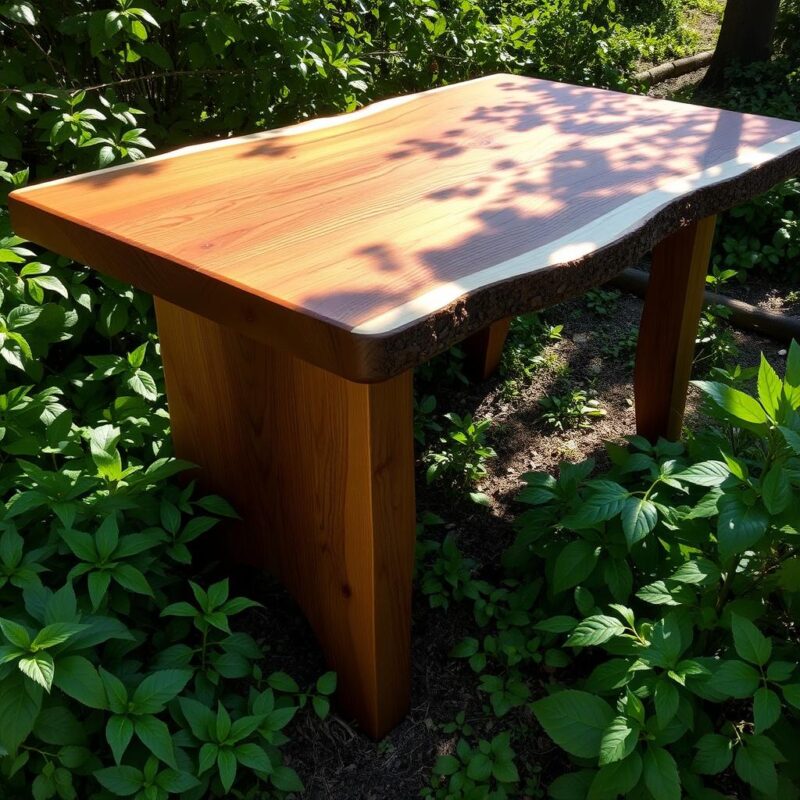
Butternut wood is good for making furniture, but it has its limits. It’s not the best for chairs because it can break under stress. Yet, it’s great for cabinet doors with the right design.
Butternut tree wood is also used in engineered door styles. This shows its versatility, adding stability and strength when mixed with other materials.
Butternut trees are facing challenges like the butternut canker disease. Still, using butternut lumber offers unique benefits in woodworking and crafting. It’s important to use it wisely for both conservation and practical needs.
Applications of Butternut Wood
Butternut wood is known for its beauty and versatility. It’s a favorite in furniture making and woodworking. Its medium-density and unique grain patterns meet both beauty and function needs, creating stunning pieces.
Furniture Making
It is widely used in furniture making. It has a light brown color with darker streaks, adding warmth to any room. It’s perfect for making:
- Cabinets
- Dining tables
- Accent pieces
This wood brings a rustic charm with a modern twist. Its natural grain makes furniture even more beautiful, loved by many artisans.
Woodworking and Crafting
Woodworking with butternut wood is a delight for many. Its softness and workability make it great for detailed carvings and shaping. Ideal for:
- Intricate carvings
- Detailed woodworking projects
- Custom craft items
Its softness makes it easy to shape, perfect for crafters who like to add personal touches. The wood’s absorbency also helps with strong adhesive bonding, making crafted items last longer.
Buying Butternut Wood
Buying butternut wood can be rewarding because of its beauty and usefulness. You might need to look for specialized lumberyards or local sawmills. They are the best places to find butternut, as it’s not common in big stores. Look for where to buy butternut online or locally to get the best quality.
When you’re looking to buy butternut lumber, remember the prices change based on size. Here’s a rough guide to the cost of 4/4 plain butternut lumber:
| Width | Price ($) |
|---|---|
| 4″-9″ | 6.25 |
| 9″-13″ | 7.50 |
| 13″-16″ | 8.00 |
| 16″-18″ | 8.50 |
| 18″-22″ | 10.00 |
| 22″-24″ | 12.00 |
| 24″+ | Call for pricing |
Online marketplaces are also a good place to buy butternut wood. They often have a wide selection and can ship lumber to you. Always check customer reviews and product details to make sure you’re getting quality and good service.
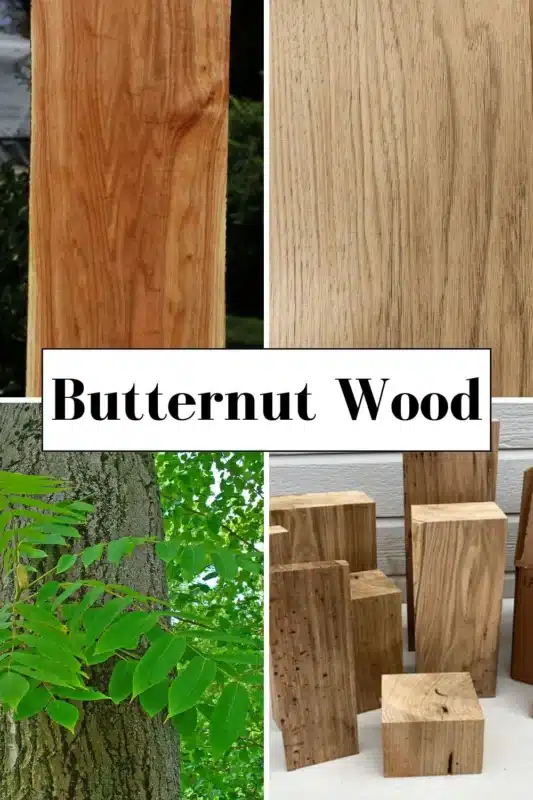
In short, finding the right place to buy butternut wood is key to getting the best hardwood for your project. Look around to find where to buy butternut and get the best value for your woodworking.
Environmental Considerations
Butternut wood is facing big environmental challenges. The butternut canker disease has cut down tree numbers by up to 90%. This disease started in 1967 and has made saving trees more urgent than ever.
Butternut trees don’t live long, with healthy ones lasting less than 100 years. Those with the disease may only live for about 30 years. This makes it crucial to save butternut wood. We need to find ways to use it responsibly to lessen its environmental impact.
Today, we see butternut trees in different health states. Trees with more than 70% of their leaves and little disease are good to keep. Trees with at least 50% leaves and no disease in key areas should also be saved.
Woodworkers are starting to see butternut wood as special because it’s getting rarer. They’re making unique pieces from it, like stained or “spalted” wood. This shows they care about saving butternut wood. We need to work together to keep it around for the future.
| Aspect | Details |
|---|---|
| Population Decline | Up to 90% decrease due to butternut canker disease |
| Average Lifespan | Less than 100 years for healthy trees |
| Condition for Retention | 70% live crown and minimal canker damage |
| Notable Dates | First reported disease in 1967 |
| Environmental Status | Listed as Endangered in Canada since 2005 |
| Sustainable Practices | Critical for the longevity of butternut wood |
We need to raise awareness and take action for butternut wood. Understanding these issues is key to ensuring a bright future for this valuable hardwood.
Butternut Wood and Its Future
The future of butternut wood looks uncertain due to environmental threats and disease. A fungus called butternut canker has nearly wiped out butternut trees in their natural habitat. This has led to a staggering death rate of over 90%, causing a sharp decline in their numbers.
In New England, butternut trees are rare, often found in mixed forests. They need lots of sunlight to grow well, making it hard for them to thrive in dense forests. Despite this, butternut wood is prized for its lightness and durability, making it a favorite among woodworkers.
Creating hybrids with Japanese walnut might save butternut wood. The “Buartnut” hybrid shows promise in fighting disease while keeping the wood’s good qualities. But, we need to protect butternut trees, raise awareness, and find ways to fight disease. This will help ensure butternut wood remains a valuable resource for future generations.
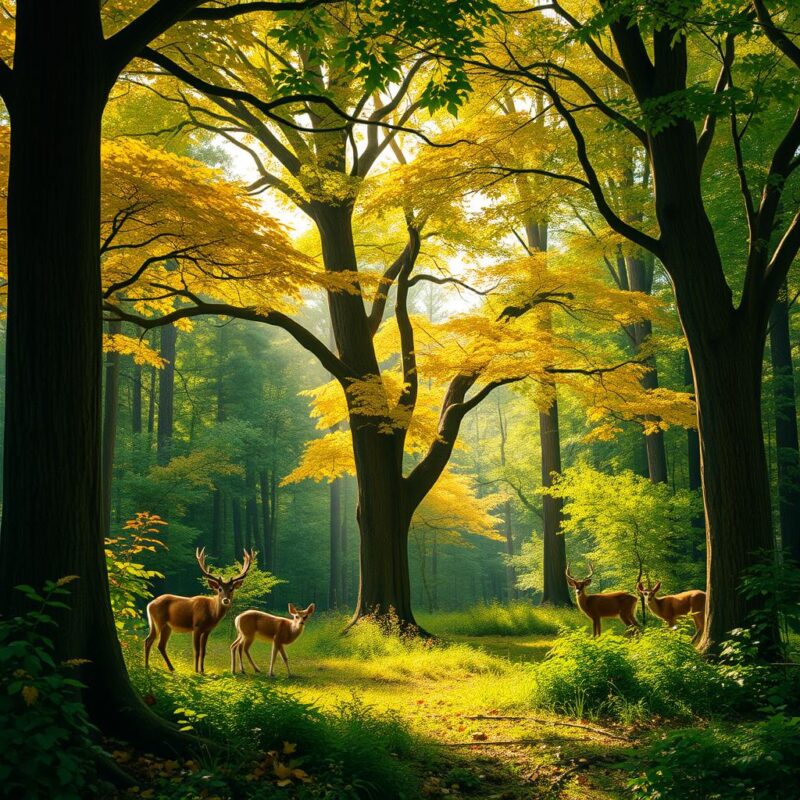
Conclusion
The butternut wood overview shows a beautiful and useful hardwood. It’s known for its light color and coarse texture. This makes it a top choice for furniture and woodworking.
But, butternut trees face big challenges like Butternut canker disease. Saving these trees is key. We need to support efforts to protect and grow butternut trees.
Woodworkers and nature lovers must act carefully with butternut wood. We need to use it wisely and help save it. This way, we can keep enjoying butternut wood in our work and ensure it stays in nature.
FAQs
Where to buy butternut wood for carving?
You can buy butternut wood for carving from specialty lumber suppliers, woodworking stores, or online marketplaces like Rockler, Woodcraft, and Etsy. Local sawmills or tree services might also have butternut slabs or blocks available.
Is butternut wood expensive?
Butternut wood is generally more affordable than exotic hardwoods but can be slightly more expensive than common domestic woods due to its limited availability. Prices vary based on size, quality, and supplier.
Is butternut wood good for cutting boards?
Butternut lumber is not ideal for cutting boards because it is relatively soft and porous, making it more prone to damage and absorbing moisture. Hardwoods like maple, walnut, or cherry are better suited for this purpose.
Is butternut wood hard or soft?
Butternut wood is considered a soft hardwood. It carves easily, making it popular among woodcarvers, but it lacks the density and hardness of woods like oak or maple.
What does butternut wood look like?

Butternut wood has a light tan to pale brown color with a straight grain and a soft, satiny texture. Its appearance is often compared to walnut, but with a lighter tone and more subtle grain patterns.
